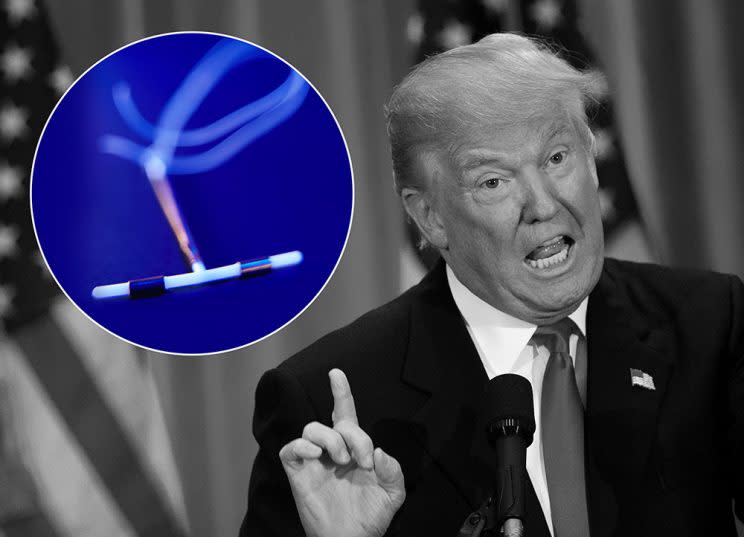IUD Procedures Are Way, WAY Up in President Trump’s America
According to new data compiled by analysts for Athenahealth and reported by Vox, intrauterine device (IUD) prescriptions and procedures increased 19 percent between October and December of 2016. A similar trend was not observed during the same time period in 2015.
In other words: The urban legends are real, and women really did rush to get themselves a form of long-acting reversible contraception once they realized Donald Trump becoming president could — and would eventually — be a reality.
The Athenahealth numbers show an increase in IUD-related appointments in both conservative and liberal areas of the country, yet the rates were steeper in areas that supported Hillary Clinton in the 2016 election.
“Our data really complements the anecdotes,” Josh Gray, vice president at AthenaResearch, told Vox. “I do think we’re capturing a national trend.”
Further support of the trend? The day after the presidential election, Google searches for IUDs spiked almost immediately.
Planned Parenthood, meanwhile, reports even more staggering figures when it comes to requests for IUDs at its health centers. Planned Parenthood Federation of America president Cecile Richards recently shared in an interview with CNN’s Christiane Amanpour that the organization has seen a 900 percent increase in women trying to schedule IUD procedures.

IUDs are rapidly gaining in popularity, with the American College of Obstetricians and Gynecologists issuing guidance in 2015 to providers to increase access to IUDs and implants. (Interestingly, 40 percent of female family planning providers themselves identify IUDs as their personal contraception of choice.)
As Yahoo Beauty previously reported, IUDs are the most popular form of contraception worldwide, and for good reason: They’re safe, they’re effective, they have no impact on future fertility, and they last for a long time. So it’s no wonder that so many individuals would want reliable birth control that you can literally set and forget.
And women aren’t wrong for looking to this option, as IUDs are also the most effective form of reversible contraception, according to the Centers for Disease Control and Prevention. Copper IUDs have a 0.8 percent failure rate, while levonorgestrel IUDs have a 0.2 percent failure rate. In comparison, birth control pills have a 9 percent failure rate, and male condoms have an 18 percent failure rate.
Yet it’s concern over new access-restricting policies from President Trump that is likely affecting women’s decisions to get IUDs — and fast.
Currently, the the Affordable Care Act (ACA), also known as Obamacare, mandates that all insurance plans cover contraception methods and counseling for all women, and that these services must be covered without charging a copay or coinsurance when provided by an in-network provider.
The contraception mandate covers all FDA-approved contraception methods prescribed by a physician, including IUDs — no small feat, considering that IUDs often cost approximately $1,000 without such coverage.
Yet a cornerstone of Trump’s campaign messaging was to repeal ACA (he’s already taken steps through executive order to do so) — including the aforementioned provision.
Trump’s proposed actions not only incentivize women to get an IUD while it is still covered, but to get a form of contraception that once inserted, can work, depending on the device, for five or more years.
Related: 8 Not-So-Obvious Ways the Global Gag Rule Can Hurt Women
Follow us on Facebook, Instagram, and Pinterest for nonstop inspiration delivered fresh to your feed, every day.
